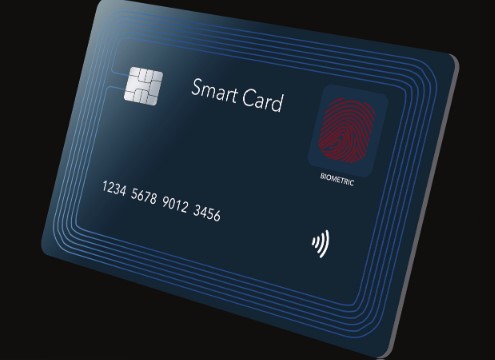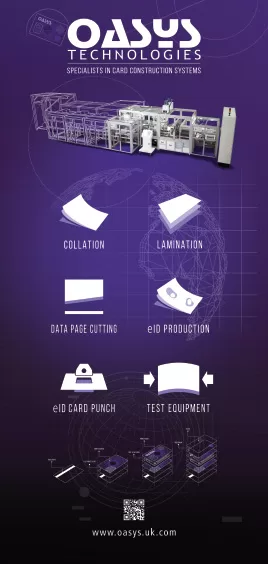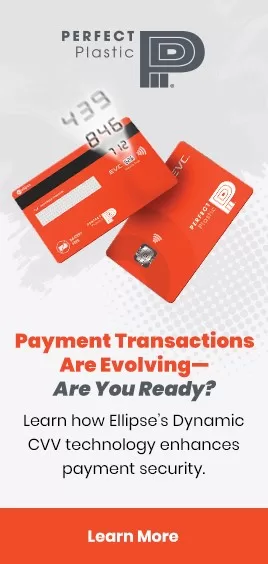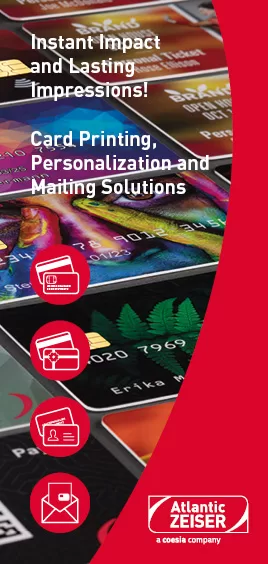
by Jennifer Kohlhepp | CM Magazine Featured
The Future is Now: Biometric Smart Card Era Unfolds
 By Jennifer Kohlhepp, Managing Editor, ICMA
By Jennifer Kohlhepp, Managing Editor, ICMA
Biometric smart cards have progressed through an extensive evolution from complex, bulky and expensive formats to International Organization for Standardization (ISO)-compliant, cost-efficient and scheme-certified contactless products.
In synch with the upswing in contactless usage and raised contactless credit limits, biometric smart cards deliver a clean, touchless and secure experience that is critical for transacting today.
Signs of market activation can be seen worldwide as live deployments of biometric smart cards continue to take place.
Biometric Smart Card Evolution and Status
The concept of a biometric smart card is not new. The card industry has been trying to make sense of it for several years but there were many obstacles including technology hurdles in the way. The cards had to be able to work within a contactless environment. There were also card manufacturing challenges and unacceptable cost points. Issuers also had to learn more about biometric smart cards’ value proposition and capabilities.
The first generation of biometric smart cards were very complex and expensive. Costing a little less than $50, they relied on batteries, supercapacitors and complex embedding (12+ connections to the sensor). They also required a complex and expensive flexible printed circuit board (PCB) (microcontroller unit (MCU), companion chip and basic power management unit (PMU)).
The second generation of biometric smart cards relied on a simplified PCB (MCU, PMU) leading to decrease in the list of all the needed parts in the manufacturing process to build the PCB). They cost between $15-$30.
Third-generation biometric smart cards cost less than $5 when manufactured in high volumes. They do not rely on an electronic inlay and are copper wire compliant. The manufacturing process has stabilized to eight pads or less and the sensor module integrates all other components—an integrated power management unit and an integrated MCU.
The newest generation designs support super secure elements, emerging bio secure elements and low-cost secure elements. These are just some of the choices that are emerging and making integration easier than ever been before. There are multiple secure element configurations. The image delivery-only option has to have a dedicated MCU for matching and power is managed out of the secure element. Another option is full matching using an onboard MCU from the senor and power management from the secure element. A third option is full matching with an onboard MCU and power management supported by the fingerprint sensor.
The passive inlay implementation also enables assembly choices that can support a flex embedded antenna, embedded antenna and a sheet-based option.
Market Status
Biometric smart cards are suitable for a wide range of applications including payment, logical access control, physical access control, health care, financial inclusion, city cards, government ID cards and public transportation cards. Dual-use cards have also become a discussion point with issuers.
All of the boxes are being checked for market activation from a security perspective as biometric smart cards use an advanced matching algorithm, fully encrypted sensor communication channels and have low false accept rates.
Biometric smart cards are convenient for users who want to enroll from the privacy of their own home. Their large sensors enable fewer touches to enroll and low false reject rates. At a cost effective and affordable price point, they also offer improved power consumption without batteries or supercapacitors.
When it comes to manufacturability, biometric smart cards have a flexible ISO-compliant substrate, support both hot and cold lamination and have a simplified passive inlay and footprint.
The biometric smart card ecosystem has been established for many years and is now continuing to grow with card component and biometrics companies, card integrators and issuers working together. The card component companies provide the secure element, power harvesting, MCU and inlay for the biometric smart cards. The biometrics companies provide the sensor, algorithms and biometric system know-how. The card integrators offer the card manufacturing and personalization services, and the issuers offer the end-user relationships within the ecosystem. The ecosystem’s priorities are the industrialization of the manufacturing process, the business model (who pays for what) and multi-vendor interoperability.
Business Case for Issuers
Now that many pilots and soft launches have transitioned into commercial deployment throughout the world, there is a growing awareness among issuers of biometric smart cards and their extra layer of security that does not impact the use model at all.
Primarily, issuers benefit from biometric smart cards’ fraud reduction/prevention of lost and stolen as well as friendly fraud. These cards also help prevent account takeover and the opening of fraudulent accounts. They also accelerate the penetration of cash transactions, have the top-of-wallet effect and help grow accounts.
The overall improved cardholder experience leads to increased frequency of usage, preferred card usage and a competitive advantage. Biometric smart cards can also take share from mobile payment apps based on their simplicity.






